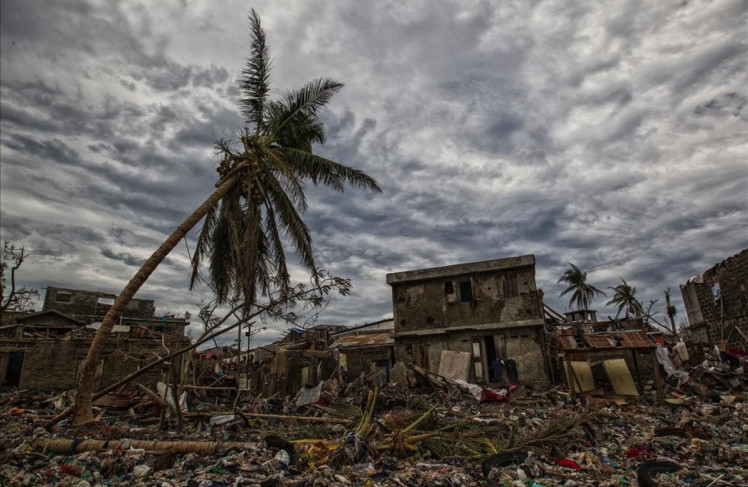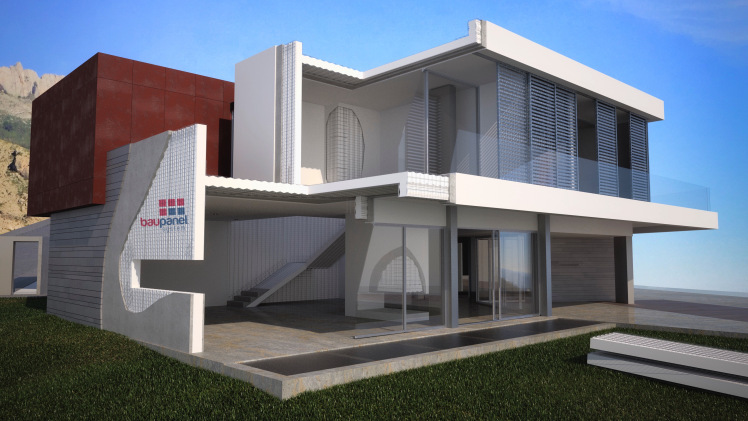More than 1,000 deaths, 30,000 homes affected or destroyed, winds up to 300 km/hour; These are just a few figures that left Hurricane Matthew in Haiti six years after the earthquake that struck Port-au-Prince, leaving more than 316,000 people dead and 350,000 injured. More than 1.5 million people were left homeless, constituting one of the most serious catastrophes in history.

Hurricane Matthew, as it passed through this heavily punished country, reached Category 5, which is the maximum predicted that a hurricane can reach, and destroyed everything that crossed in its way.
- Is it possible to imagine dwelling resisting these enormous forces of nature? If so, could everyone get one?
Keep in mind that Haiti is one of the poorest countries in the world and the poorest in the Caribbean with a GDP per capita of U$D739 (2016).
So, is it possible?
The answer is YES

There is a type of construction that can withstand the wind forces generated by a category 5 hurricane at a very affordable construction cost. So, you’re thinking, maybe that an affordable solution would surely not meet all the habitability and comfort criteria for its residents;
Fortunately, the solution that we have also meets the requirements of one of the most demanding European regulations, such as the Technical Building Code of Spain (CTE)
Well, it seems that we have everything: HURRICANE RESISTANT AND COMFORTABLE HOMES
Would it be possible that the architecture of these homes we can provide could be adapted to the culture and taste of each country?
The answer is YES
We offer total freedom of architectural expression that allows us to design houses adapted to the local needs keeping whilst at the same time keeping the homes affordable.
Of course, after all the above, you are now wondering if using this technology, we have can employ local labour and material resources of traditional housing construction.
The answer is YES
The technology we have is very easy to implement, allowing it to be applied by personnel with no previous experience, which does not limit production capacity, and can respond to an urgent demand as a result of a natural disaster.
Our Technology is…
The Baupanel System

Let us demonstrate each of the questions raised point by point.
Hurricanes
The wind force acting on a construction has a magnitude proportional to the square of its velocity. Thus, a wind of 100 km/h generates forces four times higher than one of 50 km/h.
According to the Spanish regulations, the basic speed in the area with the highest wind is 29 m/s (104.4 km / h), which generates a basic dynamic pressure of 0.52 kN / m2.
A hurricane like Mathew, sustained winds of 300 km/h generate a dynamic pressure equal to 4.34 kN/m2, or 8.35 times higher than the highest value given by Spanish legislation.
The dynamic wind force exerted on a dwelling is equal to the product of the exposure surface by the value of the dynamic pressure.
In order to simplify the calculation, modern wind regulations use an equivalent static pressure value, which is obtained by multiplying the value of the dynamic pressure by a series of coefficients that depend on several factors: shape, height of construction, environment, Etc., which cause the wind computing force to exceed the value of the dynamic force. For the purposes of this example, we assume that the coefficient reaches 1.25.
We would then have a dwelling, for example in Santander would be calculated to withstand a static pressure of 1.25 x 0.52 kN/m2 = 0.65 kN/m2 whereas that same housing, if it were to resist Matthew would have a pressure value of calculation 8.35 times higher, that is: 5.43 kN / m2 (543 Kg/m2).
if we consider illustrating this example that we had a house whose dimensions in plan were 3,375×9,00m and a height of 2,70m, the horizontal force that should withstand in the greater direction would be equal to:
5.43 x 9 x 2.70 = 131.95 kN (13.2 Ton)
And in the minor direction:
5.43 x 3.375 x 2.70 = 49.48 kN (4.95 Ton)
The total force will be distributed by the walls that are in the direction of the wind.
In the main direction, there are 4 walls (2 exteriors + 2 interiors) and in the lower direction there are only 2 walls that are the exteriors of the house.
Therefore, the walls with greater solicitation will be the ones of 3,375 m that support each of them a quarter of the force of 131.95 kN:
F = 32.98 kN
In order to simulate this effect, a cyclic loading test was carried out at the Eduardo Torroja Institute.
TEST IMAGES AT THE EDUARDO TORROJA INSTITUTE
The breakage of the wall is reached with a horizontal force greater than 200 kN.
This means that we have an additional safety factor for a force such as that of Matthew greater than: 200 / 32,98 = 6
To destroy the walls would require a force 6 times more powerful than Matthew.
It’s unimaginable!
If we thought of housing solutions face to a catastrophe like Matthew, the first thing that would normally come to our minds would be camps, which provide only transitional shelter since they are not designed as if they were housing. In them, people are in a very precarious situation and sadly the reality shows us that they almost always end up being inhabited for many years by those who have lost everything in the catastrophe.
Authors: Marcelo Zolezzi & José Miguel Rodríguez













